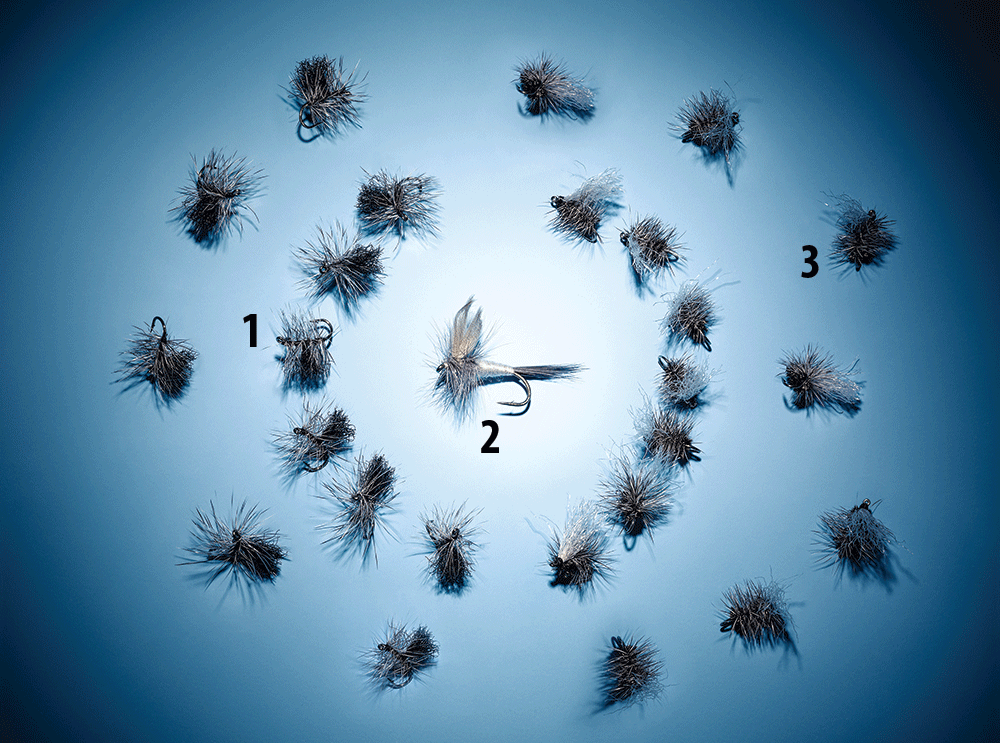_We may earn revenue from the products available on this page and participate in affiliate programs. Learn more ›
_

Stuff your winter fly box with these midge patterns. Travis Rathbone
More than 50 percent of the average trout’s diet consists of tiny midges, and it’s these microscopic insects that you’ll most likely find flying above local streams this month. But don’t knock yourself out trying to tie a size 28 bug to hair-thin 7X tippet with frozen fingers. When it comes to catching cold-weather risers, larger midge-cluster patterns are often more effective. These are the most effective patterns for catching trout in the winter.
1. Grizzly Cluster
In faster water—and especially in bubbly seams—buoyancy is critical. This pattern, tied with grizzly hackle on a light hook, rides higher than some other clusters and helps you spot takes that you might otherwise miss with a low-riding single-midge pattern. That’s important because trout rarely charge midges. They subtly suck them down. When you see this buoyant fly disappear, set the hook.
2. Blue Dun
The greatest lesson on cluster fishing I’ve ever learned was taught by Bighorn River guide Dan Stein, who tied a No. 14 Blue Dun onto my tippet and told me to cast an extra 10 feet upstream of a feeding brown. After the fly hit the water, natural midges swarmed all over it—they’ll cluster around almost anything buoyant and semi-natural-looking while mating. When the “meatball” hit the zone, the trout couldn’t refuse.
3. Griffith’s Gnat
With a peacock-herl body and sparsely spun hackle from front to back, the Griffith’s Gnat doesn’t look like any individual, natural insect. Rather, the tangle of hairs and luminescent green hues are meant to look like a tiny bug convention to an underwater trout. A size 18 Gnat dropped in slow-moving water will often elicit a curious rise now. It’s also one of the best flies for still-water sippers at any time of year.
![Field & Stream [dev]](https://images.ctfassets.net/fbkgl98xrr9f/1GnddAVcyeew2hQvUmrFpw/e4ca91baa53a1ecd66f76b1ef472932b/mob-logo.svg)





